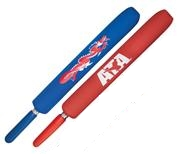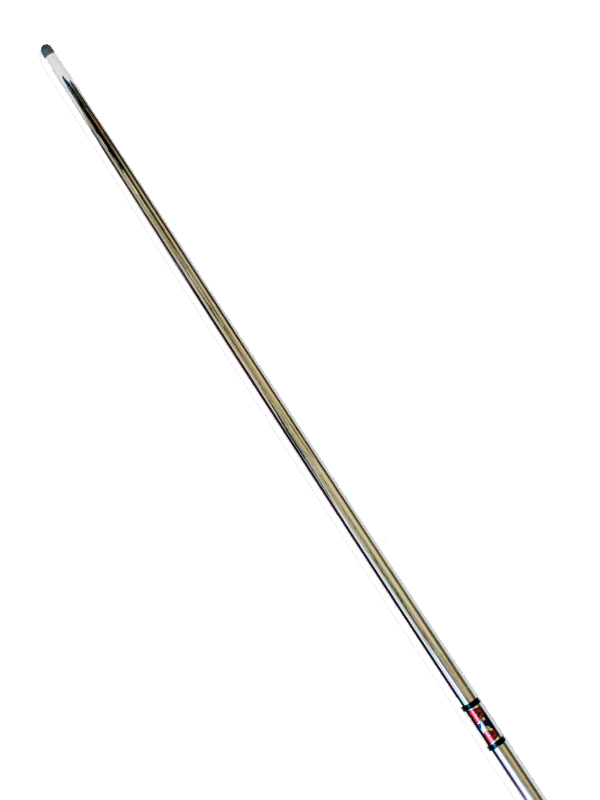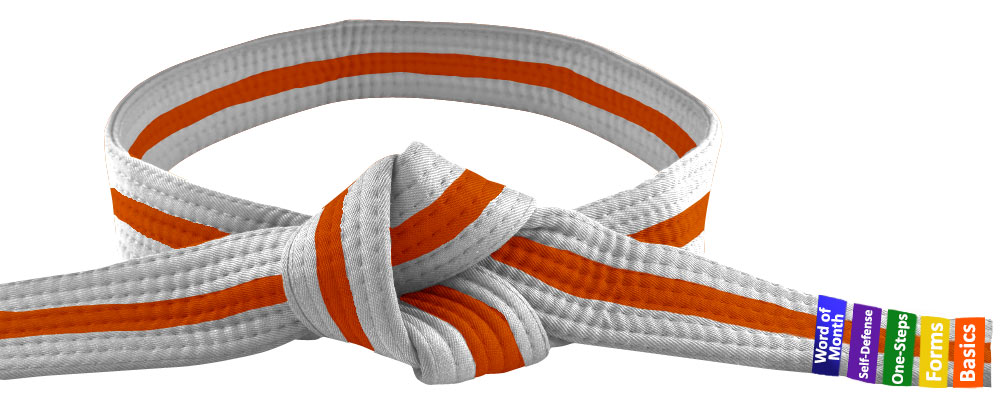FREQUENTLY ASKED QUESTIONS

While we hope that our school will fit your needs, we do at times recommend that people find a school that better fits there specific needs. Here is a guide to evaluating a school that we think will help in your decision making!
Location
- A school’s proximity to your home (or kid’s school) really matters over time. Keep in mind that class times are often near rush hour traffic and be sure that the school’s you are looking at will work with what time the kids get out of school. Ask yourself if you are honestly willing to spend the time to drive to the classes several times a week.
Equipment & Facility
- Is the school clean?
- Is the equipment in good condition or is it worn out and should’ve been replaced years ago?
- Is there a good place to change clothes?
Classes
- What is the average size of the classes? (Some students prefer the energy of larger classes while other’s prefer small class sizes)
- If classes get too big what do the instructors do? (For example, we have the ability to add instructors and also do limit enrollment at times as well)
Schedule
- Does the schedule work for you?
- Does the schedule work for you and the rest of your family members?
- Can you change times/days if needed?
Quality of Instructors
- What does it take to be an instructor there?
- Who teaches? Is it just the highest rank instructor or is it a mix?
- Do they have a program for training their instructors (and do they do it for specific age/rank groups)?
- How long have the instructors been training?
- Do the instructors have any awards or other achievements that show that they are legitimate?
- Are they accredited? (While being part of a larger organization doesn’t necessarily mean quality – some groups like the ATA do have quality control and other standards that lead to more consistency)
- It may seem obvious, but do the instructors seem like they can connect with the age they are teaching?
Ranking/Testing
- Ask about the curriculum and what is required for the belts
- If it seems to be more of a time based rank advancement you are most likely not getting a martial arts experience based on improvement, but instead are paying for your ranks.
- If you have time, ask to come watch a testing. Watching a testing and the students will most likely be a great example of how the school is ran and what the students learn.
Price
- Is the school in your price range?
- Do students have to pay more at higher ranks? If so, why?
- A more expensive program doesn’t necessarily mean that it’s better. I’ve known some great school’s that charged very little, but at the same time if instructors are going and training themselves, buying the better equipment, etc – it may be that the higher cost is due to a higher quality.
Other notes:
If you can watch a class we recommend that you do! If they won’t let you watch a class, that is probably a warning sign. We recommend that you go and take a trial class or month at a couple of school’s. See if the school’s feel and instruction style match what you are looking for! No one school is right for everyone so take the time to find a school that matches your particular needs and goals!
We get this question often and in our opinion the answer is simple – the style that you enjoy and will stick with!
The body only works so many ways and whether you call a kick a snap kick or a #2 Front Kick correct application and using the body correctly is more important than just the style. Finding a qualified and knowledgeable instructor will matter far more than the style being taught! If you are comparing styles to figure out which one is better, we’d encourage you to instead compare programs and not just style. Does the program’s goals seem to fit what you are looking for? Do you get a good feeling from the instructors, etc?
For more information on choosing a school – please see our post, “How do I choose a Karate, Taekwondo, or other Martial Art school?“
Our adult program focuses more on Self Defense and fitness than the life skills for the kids program. This isn’t to say that they don’t also improve these areas just that it isn’t the focus of the program.
Other common benefits include:
- Increased Self Confidence and pride
- Increased Self Discipline
- Weight Loss
- Improved Memory and Focus
- Reduced Stress & Anxiety
- Sleeping better
In general the sooner the better! Our ATA Tiger Program starts at age 3 if they are potty trained and ready. Some students aren’t quite ready to focus or listen and so they may start at a later age. Because of the mental benefits that students get, the sooner they can start working on developing these skills the better!
On the other side – no one is too old to start. We’ve had Grandparents train with us. While their training is very different from a teenager, they too enjoyed the program and found themselves gaining confidence and having fun with everyone else!
Because it’s more than just a sport. While we do compete and focus on the sport component for those that are interested – Martial Arts are a way of life. We focus on more than just physical improvement. We also focus on life skills such as Confidence, Self-Control, Respect, Integrity, Perseverance, Honor, Discipline, Self Esteem and more!
Our talks about our Word of the Month(s) will focus on applying those skills in the martial arts school, at their normal school, and at home. This isn’t simply a sport where they play it twice a week, but other than games or practices doesn’t affect their normal life. Quite simply you will get the benefits of sports with the added mental benefits that only martial arts can provide!
One other key difference is the individual or personal part of this system. Especially for the first few ranks students are mainly judged on their improvement. One student that isn’t technically as good may pass a testing because they’ve made huge personal improvements compared to another who (while technically better) didn’t actually improve over the cycle. This isn’t a place where everyone gets a trophy for showing up, they gain confidence because they know that they truly earned their ranks. That difference of knowing you earned it instead of just given to you really helps a student feel more confident and proud because they know they earned it!
If you have an injury that needs to heal or have surgery we want you to take care of that before you start training. However if it is something that won’t go away, we will adapt things to fit what you can do! Everyone has strengths and weaknesses and our program works with you to improve things, while also learning to use your strengths. For our instructors it is a fun challenge to work with people who don’t move the same and find a way to modify a technique so that it can still have the same result as the original method! If you are concerned with this, please just speak to us!
There isn’t any shape that you need to be in to start!
Adults often worry that they aren’t in good enough shape to begin training but they don’t need too. No matter how good or bad of shape you are in we will tailor our workout to make sure that it is a good workout for the individual. We’ve had students that came in marathon runners and others that were over 300lbs. We will work with you to find the right workout amount so that you can get good results without being so sore that you can’t handle your normal daily life!
We work very hard to have a safe environment for our students and accidents are quite rare. We did have a student that for her Black Belt paper do a study and found out that Martial Arts is actually much safer than other sports in terms of injuries reported! It is an active class and people are learning new skills so we can’t guarantee there won’t be accidents, but we want our students to be able to come back to class again and so we work hard to avoid them!
Definitely not! In fact most martial arts students actually calm down and become more polite through training. If students are acting out we will talk to them and help the parents out. We make sure that they understand that they are only to use their training for self-defense and if they are using it irresponsibly they won’t be able to continue.
Definitely! Through this program they develop new skills in a positive environment and this helps them gain confidence. It’s truly amazing to watch students grow over the years and to hear the stories of them showing confidence outside of just this school!
Our program is based around personal improvement – and this means very different things for different people! Over the years our instructor staff has worked with a variety of students that had learning difficulties such as down syndrome, ADD, ADHD, etc. Martial Arts is a great way for students to learn at their own speed and feel comfortable while working on skills that will help them through the rest of their life.
Many parents have brought us students who “couldn’t focus” or had “terrible ADHD” and saw tremendous results. In fact many of our instructors have been diagnosed with ADD/ADHD as children and because of this are quite understanding of the situation and how to help students overcome these difficulties.



At LT-MA, weapons are used as training tools to help support muscle development, ambidexterity, and hand eye coordination. As one the few sports that work both left and right side of the body equally, we implement this specialized training to facilitate our student’s developmental process. Teen and adult students also learn to use weapons in self-defense scenarios. Our weapons program adheres to the ATA Pro-Tech Training System which requires a robust instructor safety education and certification process complete with annual re-certifications. Some of the weapons used our program are Ssahng Joel Bong (nunchucks), Bahng Mahng EE (stick), Jahng Bong (staff), and Gum Do (Two handed Sword).
Unlike other martial arts schools, the ATA doesn’t throw inexperienced beginners into a fighting ring to learn through their mistakes. During the first three belts, students are trained on One Step Sparring techniques designed to carefully introduce the fundamentals of distance and accuracy. Once students begin sparring, safety is our number one priority. All sparring gear is mandatory to participate and includes feet pads, hand pads, chest protector, mouth-guard, a padded helmet with reinforced plastic face shield, and groin protectors for male students. During a sparring match, the goal is not to harm or inflict pain on the opponent. Instead, a highly controlled point system is in place encouraging and rewarding students that can hit strike points with the most control. This teaching method ensures a safe, fun, and challenging environment while also strengthening speed, power, and control in the event these skills are needed in a real-world setting.
Sparring is required at camo belt for rank progression, however students may be able to start sparring earlier with instructor permission!
Definitely! We participate in regional, national, and international ATA competitions and (with permission) open tournaments throughout the various martial arts communities. Region 102W, the region we belong to, hosts five regional tournaments each year (typically in the Chicago, Milwaukee, or Madison areas). There are also two National tournaments (Fall in Orlando, FL and Spring in Las Vegas, NV) and one World Championship (June or July in Little Rock, AR) tournament each year that our students frequently attend. Though tournament participation is not required, it is our believe that these tournaments offer an exciting opportunity for our students to gain invaluable insight on their strengths and weaknesses in addition to getting exposure to other competitive styles.
In general tournaments are not required! However, we strongly encourage our students to attend at least one tournament before earning their Black Belt. This helps hone one’s skills by demonstrating/presenting in front of people [aka ‘public speaking’ which is an extremely valuable life skill].
The black belt in Taekwondo is symbolic of advanced martial arts skills as well as above average physical, mental, and emotional strength. It is our believe that the journey to black belt is just as important as the destination itself. For this reason, the length of time necessary to attain a black belt varies depending on dedication, comprehension, and overall proficiency. A typical student that attends classes regularly and actively participates in our programs will earn their 1st Degree Black Belt within two years to five years. It is extremely important that the instructors uphold the integrity of our art form by only advancing students that have proven ready to advance. In addition, some black belt levels require a minimum age for advancement. Finally, the student must demonstrate proficiency in forms, sparring, self-defense, various weapons, and board breaks in order to achieve the black belt ranks.
We use stripes on the belts as a way to communicate with parents. When we stripe a student that means that we have seen the material at a passing level. However, students may still test without earning these stripes as we may have just not seen it in class, but that doesn’t mean that they aren’t ready.
Karate for Kids & Adult Stripes

Stripe 1: Basics
New movements at the rank – please see the Black Belt Club Manual for a complete list
Stripe 2: Form
They must be able to do the form at a satisfactory level and also know the answers to the following three questions. What is the name of your form? What is the meaning of your belt color? How many moves?
Stripe 3: One-Steps OR Sparring
White-Yellow belts must be able to do the three One-Steps for their level with a partner.
Camo Belt & Above students must come to a minimum of 8 sparring classes during their cycle. (Or discuss a different number with Mr. Overby) They must also be able to explain and demonstrate the required Sparring Concept for their rank such as movement, range, etc.
Stripe 4: Self-Defense
Students must be able to do the Self-Defense movements at a realistic level with a resisting partner slightly larger than themselves. It must work, not just be a memorized partner drill.
Tiny Tiger Stripes

Stripe 1: Basics
New movements at the rank – please see the stripe sheet on the website for the list each cycle
Stripe 2: Form
Tigers must be able to do the moves with small amounts of help (for memory). Plus they should know the same questions as kids and adults: What is the name of your form? What is the meaning of your belt color? How many moves?
Stripe 3: One-Steps OR Sparring
White-Yellow belts must be able to do the One-Steps for that cycle with the words.
Camo Belt & Above students must come to a minimum of 8 sparring classes during their cycle. (Or discuss a different number with Mr. Overby) They must also be able to explain and demonstrate the required Sparring Concept for their rank such as movement, range, etc.
Stripe 4: Self-Defense
Students must be able to do the Self-Defense movements at a realistic level with a resisting partner slightly larger than themselves. It must work, not just be a memorized partner drill.
Stripe 5: Word of the Month
This is earned by filling out a worksheet that will be available on the website several weeks before testing. It allows for parents to discuss with their students the life skill that has been being discussed in class. They will answer questions about the life skill such as, “What does respect mean to my parents?” They will then turn this in and present their paper to the class. As they may not be able to read the instructors will help them with this part.
For both of our programs (Tiny Tigers & Karate Kid/Adult) our belts go in the following order: White, Orange, Yellow, Camouflage, Green, Purple, Blue, Brown, Red, & Black.
Tiny Tiger Belt Rank Colors
Our Tiny Tigers have special belts that correspond with characters. For more information please go here!

Karate Kid & Adult Belt Rank Colors

Belt Color Meanings:
White Belt “Pure and without the knowledge of Songahm Taekwondo. As with the Pine Tree, the seed must now be planted and nourished to develop strong roots.” The student has no knowledge of Songahm Taekwondo and begins with a clean (pure) slate.
Orange Belt “The sun is beginning to rise. As with the morning’s dawn, only the beauty of the sunrise is seen rather than the immense power.” The beginner student sees the beauty of the art of Taekwondo but has not yet experienced the power in the technique.
Yellow Belt “The seed is beginning to see the sunlight.” The student begins to understand the basics of Taekwondo.
Camo Belt “The sapling is hidden amongst the taller pines and must now fight its way upwards.” The student begins to realize his/her place in the world’s largest martial art. The student must now begin to spar in order to promote in rank.
Green Belt “The pine tree is beginning to develop and grow in strength.” The student’s technique is developing power. The components of the basic techniques are beginning to work in unison.
Purple Belt “Coming to the mountain. The tree is in mid-growth and now the path becomes steep.” The student has crossed over into a higher level of Songahm Taekwondo. The techniques, forms, and level of sparring becomes more difficult creating a “mountain” that must be overcome.
Blue Belt “The tree reaches for the sky towards new heights.” Having passed the midway point, the student focuses his/her energy upwards toward black belt.
Brown Belt “The tree is firmly rooted in the earth.” At this point the student has mastered the basics and developed deep roots in Taekwondo.
Red Belt “The sun is setting. The first phase of growth has been accomplished.” The first day (the period of time from White to Red belt) of growth is coming to an end. The physical skill has been developed but lacks control; therefore, physical and mental discipline must now be achieved.
1st degree recommended Black Belt “The dawn of a new day. The sun breaks through the darkness.” The previous day has ended giving way to a new dawn. The student must begin a new phase of training; that of being a black belt.
1st degree decided Black Belt “The tree has reached maturity and has overcome the darkness. It must now begin to ‘plant seeds for the future’.” The color black is created when all the colors of the light spectrum have been absorbed into an object. That object has “taken control” of the colors and retained them. If one color was to “escape”, the object would no longer be black. The student has mastered the nine grades of Taekwondo. He/she has “absorbed” all the knowledge of the color ranks and overcome or “mastered” that level of training.
The ATA is proud to train the largest number of active female students when compared to every other martial arts organization in the world. Because requirements for rank advancement are not gender specific, males and females are expected to perform at an equal level of proficiency and comprehension. With that said, the training modules designed to teach this curriculum are sometimes tailored for male / female roles to ensure maximum applicability. Regardless, our students can always expect a safe, professional, and respectful environment.
Definitely not. Students come to us with different goals so their benefits are quite different.
The ATA has developed and refined several programs for a variety of purposes. Over the years, the ATA has come to realize that our vast student body has discovered nearly endless possibilities to apply their martial arts training. It is for this reason that we have worked hard to develop programs that will help actualize these goals rather than forcing our students into one, linear area of study. Taekwondo is always evolving and as such, the ATA will continuously develop and improve our programs to ensure our students have as much access to the different aspects of Taekwondo as possible.
EVERYONE! It’s a common misconception that only physical athletes can participate in martial arts training. While this may be true within other styles, the ATA thrives on it’s diversified student body comprised of all ages, genders, and ability levels. Though the personal goals for each student may differ, the universal traits to achieve success in our organization carry over into all aspects of life.
We work hard to make sure that the students all improve. While this means very different things for different people, we feel that it is extremely important to tailor our program to the individuals.
Although its roots can be somewhat traced back to ancient Korea, it is a historic fact that Taekwondo as an organized art is relatively modern. In fact, the only documented history begins in the mid 1900’s. The actual beginnings of Taekwondo are obscured by time, yet many historians believe it originated from a Korean martial arts form known as t’aekyon practiced over 1,300 years ago.
During its early years, the ATA used the Chahng-hun style of forms (also used by the International Taekwondo Federation). But although this style was widely accepted in the Taekwondo community, Eternal Grand Master H.U. Lee felt that its forms did not accurately reflect Taekwondo, particularly the strength and beauty of Taekwondo kicking techniques. As a result, he believed the forms contributed little to the Taekwondo curriculum.
From 1983 to 1990, Eternal Grand Master introduced the eighteen Songahm forms. These forms are part of a fully-integrated curriculum, in which everything a student learns reinforces everything else. The forms contain all or nearly all of the techniques that students are expected to know at each rank, the one-step sparring segments complement the forms, and all of these patterns lead logically to the movements required for each succeeding rank. Read more at ATAOnline.com.
We are members of the American Taekwondo Association. You can find out more information at ataonline.com
Yes you can! Please click here to schedule a class time – online! Here you can you can schedule your Free Intro Class as well as get a chance to see the facility.
You can see all of our class times on our schedule page – click here!
Testing’s are normally every 8 weeks – but sometimes this varies due to events like National Tournaments, holidays, etc. To view the upcoming testing dates and other events, click here to visit our Event Calendar!


